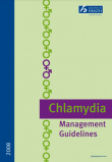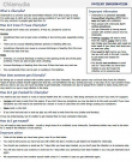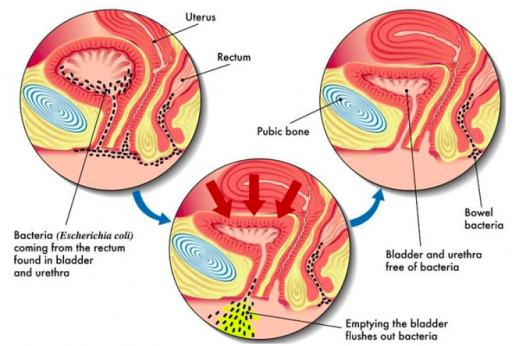Chlamydia is the most commonly diagnosed sexually transmitted infection (STI) in New Zealand. It affects people of any gender. Chlamydia can be easily treated with antibiotics, but if not treated, it can cause infertility.
Key points
- Chlamydia is a common sexually transmitted infection (STI). It is quite easy to catch through sexual contact.
- Chlamydia can cause serious problems if you don’t get it treated. However, it is easy to treat.
- When treated early, chlamydia does not cause any long-term complications. Left untreated, serious and permanent damage can occur.
- Most people who have chlamydia don’t show any symptoms but you can still infect other people, so regular sexual health check-ups are important.
How is chlamydia spread?
In nearly all cases chlamydia is transmitted through sexual contact.
- You can get chlamydia by having unprotected vaginal, anal or oral sex with someone who has chlamydia.
- You can still get chlamydia even if the person you’re having sex with does not ejaculate (cum).
- Chlamydia can also be spread through other types of sexual contact such as mutual masturbation, fingering or the use of sex toys.
- One simple way to protect yourself is by using a condom when engaging in sexual intercourse.
Another way of transmitting chlamydia is from mother to baby during birth. If this occurs, your baby may develop an eye or lung infection. This needs urgent treatment.
| If you are sexually active, get regular STI checks. If you think you may have been exposed to chlamydia, see your doctor for an extra STI check. |
What are the symptoms of chlamydia?
Most people who are infected by chlamydia don’t notice any symptoms and so don’t know they have it.
- If you do have symptoms, they may not appear until a few weeks after you have sex with an infected person.
- Symptoms can appear 1 to 3 weeks after infection, many months later or not until the infection has spread to other parts of your body.
- Chlamydia can be transmitted to other people even if you don’t have symptoms.
- If you have the infection but no symptoms, you can remain infectious for months or even years without knowing it.
Common symptoms, if they do occur, may include the following:
- unusual vaginal discharge (fluid)
- unusual vaginal bleeding (especially after sex)
- lower abdominal pain (including pain during sexual intercourse)
- soreness or redness at the opening of your penis
- clear or whitish discharge from your penis
- testicular (ball) pain or swelling
- discomfort when passing urine (peeing)
- rectal (bottom) discharge or discomfort.
Chlamydial infection of your throat can occur, but is uncommon and usually does not cause any symptoms.
How is chlamydia diagnosed?
The best way to find out if you have chlamydia is to have a sexual health check-up.
- A urine (pee) sample is used to test for chlamydia.
- Women may also need to have an examination if a full check-up is being done.
- If rectal infection is suspected, a swab is taken from just inside your anus (bottom).
How is chlamydia treated?
Chlamydia is easily treated with antibiotics such as with doxycycline, which is taken as a course of treatment over 7 days, or with azithromycin which is a single-dose treatment.
It is important to finish all the antibiotics, otherwise the infection may not be properly treated.
Condom use during the treatment period
- Avoid having sex without a condom during treatment because the infection can still be transmitted. Use condoms for 7 days after the start of treatment and until 7 days after all current sexual contacts have been treated.
- If you are on a combined oral contraceptive pill, use a condom for 14 days when having sex, as antibiotics can affect the reliability of the contraceptive pill.
After completing the treatment, phone your doctor or return to the clinic for a follow-up after 3 months to check you have not been re-infected.
Do sexual contacts need treatment?
If you have had sex without a condom with your sexual contact/s it is very likely they are infected with chlamydia. This means they need to have a sexual health check-up and be treated for chlamydia regardless of symptoms or test results.
Why is treatment of chlamydia important?
When treated early, chlamydia does not cause any long-term complications. Left untreated, serious and permanent damage can occur.
It may lead to pelvic inflammatory disease (PID). This is when female reproductive organs, found in your pelvis, become inflamed. PID may cause ectopic pregnancies (where the pregnancy develops in your fallopian tubes instead of your uterus), infertility (when the fallopian tubes become damaged by scar tissue preventing further pregnancy) or chronic pelvic pain.
If not treated, chlamydia can spread to testicles, leading to pain and swelling. Chlamydia may occasionally cause infertility in men.
Sometimes chlamydia may trigger a condition called Reiter’s disease (sexually acquired reactive arthritis) which causes inflammation of your eyes, skin and joints.
Chlamydia can be passed from mother to baby during birth. The baby may subsequently develop eye and/or ear infections or pneumonia.
How can I prevent getting chlamydia?
Anyone who is sexually active can catch chlamydia. You’re most at risk if you have a new sexual partner or don’t use a barrier method of contraception, such as a condom, when having sex. You can help to prevent the spread of chlamydia by:
- using a condom every time you have vaginal or anal sex
- using a condom to cover the penis during oral sex
- using a dam (a piece of thin, soft plastic or latex) to cover the female genitals during oral sex or when rubbing female genitals together
- not sharing sex toys. If you do share sex toys, wash them or cover them with a new condom between each person who uses them.
Learn more
The following links provide further information on chlamydia. Be aware that websites from other countries may contain information that differs from New Zealand recommendations.
Chlamydia Sexual Health Society, NZ
Chlamydia Ministry of Health, NZ
Chlamydia Family Planning NZ
Chlamydia NHS, UK
Chlamydia Healthy Sex, NZ
References
- Chlamydia guideline Sexual Health Society, NZ
- Treatment of sexually transmitted and other genital infections BPAC, NZ
Resources
Support
 Phone Healthline for free on 0800 611 116 any time of the day or night for advice on any health issue, no matter how small. In an emergency, phone 111 for an ambulance.
Phone Healthline for free on 0800 611 116 any time of the day or night for advice on any health issue, no matter how small. In an emergency, phone 111 for an ambulance.
Find a Family Planning clinic Family Planning, NZ
Auckland Sexual Health Service Freephone 0800 739 432
More support groups
Brochures
Chlamydia information guide
Ministry of Health, NZ, 2008
Chlamydia – patient leaflet
NZ Sexual Health Society, 2017
Related topics
Sexually transmitted infections (STIs) | Mate paipaiSexual health overviewOverview of contraception methods | Rongoā ārai hapūtangaCondomsPelvic inflammatory diseaseBACK TO TOPCredits: Health Navigator Editorial Team . Reviewed By: Dr Matthew Reid, Public Health Medicine Specialist, Canterbury and West Coast DHBs



